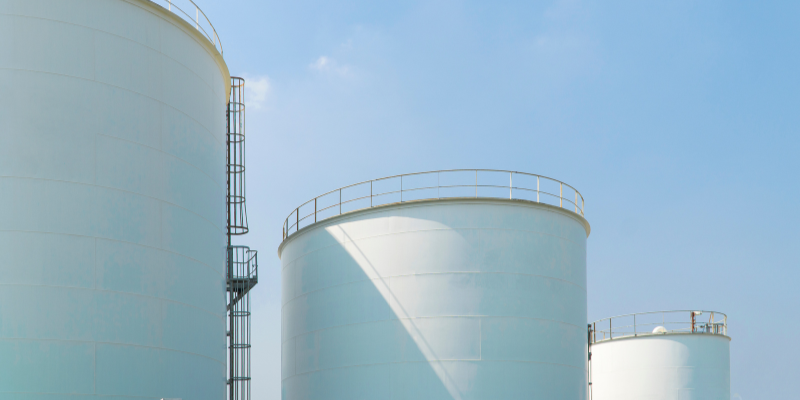
If you’re asking yourself how to clean a water tank, you’ve come to the right place. Water storage tanks are essential to preserving water for distribution networks, domestic use or commercial purposes. The water you store should be kept in the best conditions at all times. Especially if you use your tank for potable water storage.
Water tank cleaning helps prevent damage and maintains compliance with safety standards. This guide explains why tank cleaning matters, what happens if it’s neglected and how to clean a water tank safely and effectively.
Why Is It Important to Clean a Water Tank?
Cleaning a water tank is essential to prevent tank damage and contamination. Over months or years, tanks develop build-ups of bacteria, mould and sediment that affect water quality. Legionella bacteria thrive in stagnant water and can spread through systems if left unchecked. Regular water tank cleaning protects against unpleasant smells, discolouration and corrosion, keeping stored and potable water safe for everyone who relies on it.
What happens if a water tank is not cleaned?

When water tanks go uncleaned, conditions become ideal for Legionella and other harmful bacteria. For systems storing drinking water, the risks to health are even greater. An unclean water tank can cause:
• Bacteria and algae to multiply and change taste and odour
• Sediment and sludge to block pipes and valves
• Rust and corrosion, which damage internal surfaces
• Cracks or leaks, which let in dirt and contaminants
• Water quality to drop below safe standards
Breeding bacteria can produce unpleasant smells and tastes. This is because the multiplying bacteria can react negatively with the water molecules and release toxic chemicals. If the water is ingested, it can result in sickness or even cause problems to your water tank itself.
Algae, sludge and sediment build-up are all substances that can develop as a result of bacteria flourishing and thriving in your water tank environment. Not only will they make you very sick, but the internal systems of your water tank can be blocked and even begin to erode. Consistent water tank cleaning and professional maintenance remove these hazards and keep systems safe and compliant.
To learn how to reduce biological build-up in stored water, see our article on preventing algae in a water tank.
How can water tank cleaning prevent tank damage?
One of the most common ways in which water tank damage can occur is through small cracks and cavities that cannot be seen with the naked eye. Through these cracks, bacteria and mould can infiltrate your water tank and multiply. If left for long periods, a complete water tank cleaning will be necessary to restore the integrity of your potable water storage.
You can also refer to our guide on how to prevent water tank corrosion for more on preserving tank integrity.
How to clean a water tank
Cleaning a water tank follows several clear stages to restore it to a hygienic condition:
Drain the tank
The water supply is turned off and the tank is fully drained using the outlet valve or a pump. Discharged water is kept away from sensitive drainage systems and any areas where contamination could spread.
Remove debris
Once the tank is empty, the interior is cleaned thoroughly. A wet vacuum or low-pressure wash is used to lift and remove dirt, sludge and any build-up on the internal surfaces.
Disinfect and flush
A disinfectant, such as a chlorine solution, is applied at the correct concentration and contact time. After treatment, the tank is flushed until the water runs clear and disinfectant levels return to a safe limit.
Refill and protect
The tank is refilled with fresh, clean water and placed back into service. Covers and vents are closed securely to prevent debris or insects from entering. If a lining or coating is due to be applied, the surface is left dry and free of residue before work begins.
Can I Clean a Water Tank Myself?
It might seem simple, but tank cleaning should always be handled by trained professionals. Tanks often count as confined spaces, which means there are risks of low oxygen levels, slips or exposure to cleaning agents.
Professional tank cleaners use the correct equipment, safety gear and disinfectants to carry out the work safely and thoroughly. If the tank supplies drinking water, cleaning it incorrectly could contaminate the system. Most tanks should be cleaned at least every two years and always by a qualified specialist. For guidance on choosing a professional for your system checks, visit our guide on what to look for in a water tank inspection expert.
Is Water Tank Cleaning a Legal Requirement?
While there is no specific law that demands tank cleaning at fixed intervals, UK regulations require regular inspection and control of water systems to prevent Legionella. The Health and Safety at Work Act and the Control of Substances Hazardous to Health (COSHH) Regulations place a duty of care on property owners and managers.
Under these rules, tanks must be inspected at least annually as part of a written Legionella scheme. Regular water tank cleaning and disinfection are essential to meet those obligations and provide a safe environment for staff, guests and residents.
Tank Cleaning Services at COVAC
Although regular cleaning and chlorination are vital to maintaining your water tank and preventing water tank damage, we always recommend that water tank owners have a coating system installed in their tanks. Here at COVAC, we offer a specialised coating system that is proven to defy the growth of harmful bacteria, which reduces the need for regular cleaning.
The COVAC coating system not only prevents the development of harmful bacteria. But also prevents avoidable corrosion of steel on all GRP surfaces. Installing this system will eliminate the possibility of a full tank replacement before its time and save you money in the process. To inquire about our COVAC coating system or any of our other services, please don’t hesitate to contact our team now!










